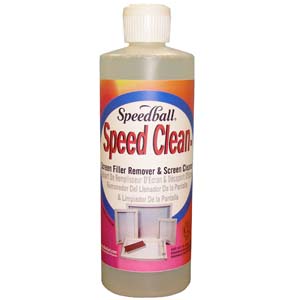


Upload your file through the checkout process. Purchase a screen exposure and screen online.
#Exposure time for 160 mesh scrfeen speedball emulsion free#
For larger files, we encourage you to use a free ftp service, such as You Send it, or WeTransfer. The Ad-Mist nozzle can adapt to a large range of viscosities, including highly viscous formulations.Covid-19 update: Pay and upload your (5MB or smaller) file through our secure online checkout.You can drop your artwork off at the shop (please make an appointment!) or email files under 5MB through our Contact Page.Speedball carries screens ranging from 85305 mesh. Depending on your skill level you may feel comfortable with smaller fonts/line weights. Lower 85150 mesh screens print less detail, but let more ink through, which is helpful printing textiles or a thick ink like white. Note: These are basic guidelines that we recommend for preparing your artwork for screen printing. Please see our artwork guidelines for more details If you're doing silkscreen printing using a direct photo emulsion such as Speedball Diazo Screen Printing Photo Emulsion, you can use sunlight instead of the.All fonts should be converted to outlines. Illustrator files must have all pictures embedded.Photoshop files should be 300 dpi and all fonts should be rasterized to a single layer.Files should be black and white with no grey tones – if you need your image halftoned by us, there will be an additional charge.Therefore, each screen has a usable exposure area. PDF, Word, or Indesign documents.ĪRTWORK GUIDELINES: In order to print comfortably, you need a margin (of at least 3″) between your artwork and the inside edge of the screen. Photoshop CS3-CS5 at 300dpi (.PSD, JPG.When you’re all set up, turn on the Speedball UV Light and set a timer for your chosen exposure time.PREPARING YOUR ARTWORK WE ACCEPT THE FOLLOWING FILE FORMATS: Remember to dry your photo emulsion in complete darkness and only bring the coated screen out when you’re ready to expose. If the screen is exposed to too much light before you’re ready, your image may not expose properly. We chose to do this process in subdued lighting which gives us a little more time to set up. It offers the same exposure time for diazo photo emulsion screens as a traditional 250-watt photoflood bulb but with a dramatically longer bulb life. Place a sheet of glass or perspex on top, to hold the film in place. Lightweight, portable, and easy to use, the Speedball UV LED Exposure Lamp is the perfect solution for all your fabric screen printing projects. Once it’s placed, the design should me a mirror image when you look at it from above. The drawn (or inkjet printed) side of the artwork should be down against the mesh. The mesh should be raised above the table. Follow along with this step-by-step tutorial to mixing and applying Speedball Photo Emulsion and Diazo sensitizer (mixture) to your prepared screen. For more help on coating your screen, see this blog post. Place your coated, dried screen on a flat surface, frame side down. Our artwork was Inkjet Screen Film drawn with Zig Opaque Pens and Jacquard Film Markers. Check out Speedball’s Screen Printing Instruction Guide to learn more about which approach is the best fit for your screen printing project. We used an A4 43T screen coated with a single layer of Speedball Photo Emulsion and Sensitiser. This was perfect for our setup, but will vary slightly depending on your method and materials used, so you are likely to need to experiment with a few times and distances when you begin. To expose an A4 screen, we suspended the light 16 inches away from the screen for 8 minutes.


 0 kommentar(er)
0 kommentar(er)
